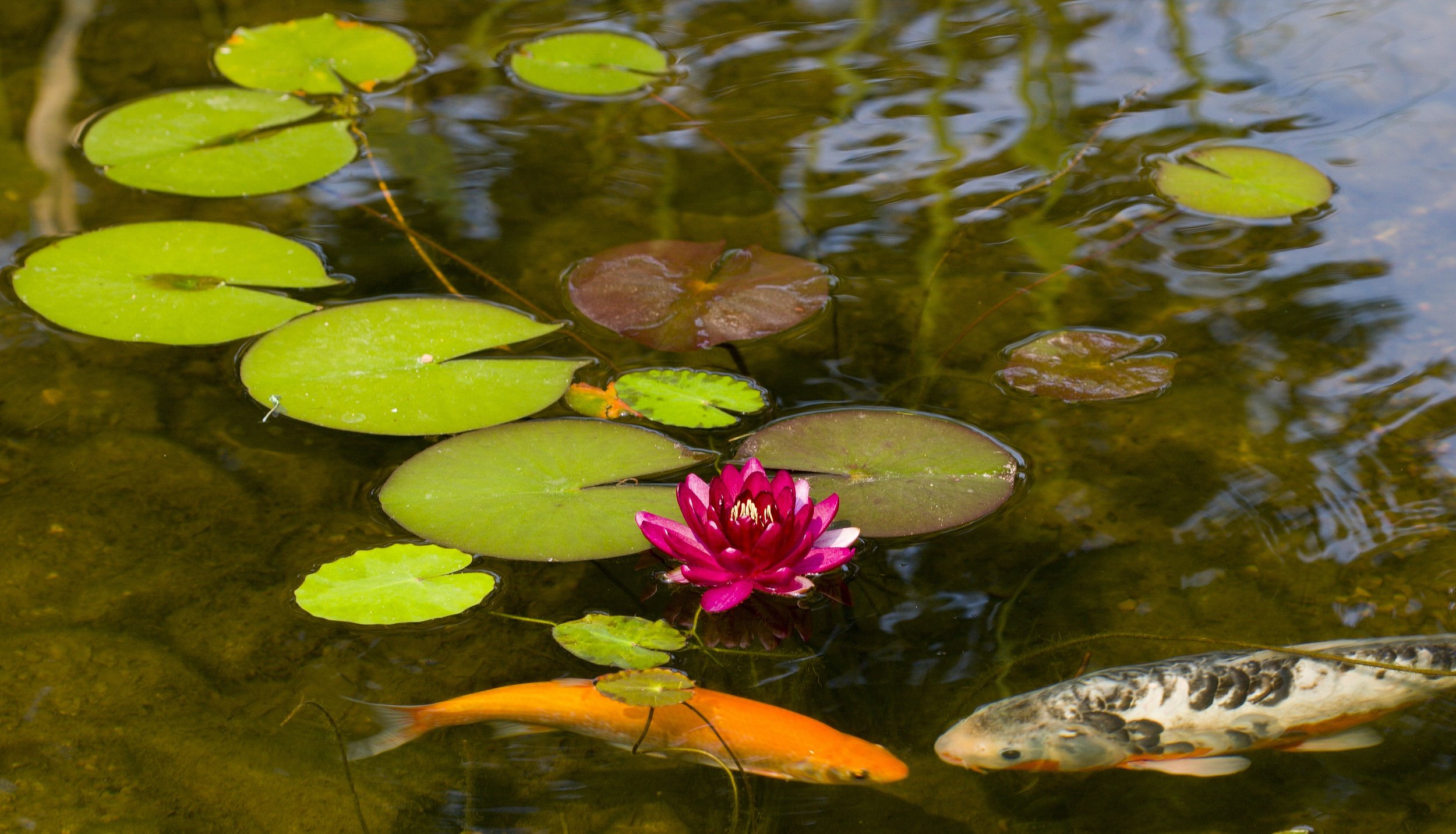Top Aquatic Plants
Plants, they are arguably the most important organisms on the planet. Without plants life as we know would not exist, as they take carbon dioxide out of the atmosphere and convert into our breathable gas, oxygen. Join us as we dive into the top aquatic plants for your pond.
About aquatic plants
The term ‘macrophyte’ is given to plants that grow in or very near water and either float, emerge from the water or grow completely submerged. They are distinct from algae because macrophytes evolved from terrestrial plants to grow in water again.
Choosing the right plants
Plants are chosen not only for their inherent qualities but also for their dramatic effect -to give height, colour, to provide scent, to provide food and to oxygenate the water. These are just a few of the effects plants can provide.
There are four categories of pond plants to consider when choosing the right plant for you. Each category have their own features and niches.
Submerged plants - Those that grow below the water surface. Also known as oxygenators, these plants are great natural filters.
Floating plants - Those that either float freely on the surface or are rooted to the bottom, sending leaves that float. These help prevent the formation of algae by keeping water cool and shady.
Marginal plants - Those that thrive at the waters edge or in shallow water. Well planted marginals help blur the line between land and water.
Moisture loving and bog plants - These make up a broad category that includes any plant that loves very moist to slight soggy soil. These plants are perfect for wildlife, providing coverage and shading when passing for a drink.
The Royal Horticultural Society have a brilliant guide for choosing pond plants.
Confused about which plants to buy?
Give us a call and we’d be happy to discuss.
Top Aquatic Plants
-

Willow Moss
(Fontinalis antipyretica) A pretty oxygenator, moss-like, spreading perennial, with long, hairy, dark green stems and spear shaped leaves. These love moving water, to a depth of 60cm. Providing great protection and coverage for pond wildlife.
-

Milfoil
(Myriophyllum spicatum) A submerged oxygenator, with feathery green leaves, often pinkish stems, providing great protection for wildlife. In summer it produces small green and pink flowers above water surface
Not to be confused with Parrots feather (M. aquaticum) as it is a highly invasive non-native, which is now illegal in the UK!
-

Water Lettuce
(Pistia stratiotes) A floating plant with approx 8 inch velvety undulating leaves, that form negligible little green flowers. Roots which can hang up to 55cm, act as a great fish nursery.
-

Frogbit
(Hydrocharis morsus-ranae) The free-floating species has 3cm diameter leaves shaped like water lilies. Forms delicate cup-shaped three petalled white flowers. Fast growing, provides great coverage. Acts as a counter to the ever annoying duck weed.
-

Yellow Skunk Cabbage
(Lysichiton americanus) A vigorous, deciduous herbaceous perennial with spectacular, large blade-shaped yellow flowers. Should be planted in very moist soil or shallow water (2cm) in sun or part shade. Gives of a distinct smell that is great at attracting pollinating bees and butterflies.
-

Lobelia
(Lobelia cardinalis) The extravagant red flower is a great pollinator magnet. A short-lived perennial, it can grow more than 4ft tall and produces dozens of its eye-catching flowers. It grows best in water up to 10cm deep, and can be used as a bog plant.
-

Brooklime
(Veronica beccabunga) A marginal, aquatic perennial with creeping, hollow stems, rooting as they spread, and usually evergreen, rounded, fleshy leaves. Short, upright spikes of small, bright blue flowers are produced from late spring to late summer
-

Water Mint
(Mentha aquatica) Leaves similar to its terrestrial mint cousin. It’s a fantastic plant for wildlife, as the flower heads are accessible to a number of pollinators. Produces the typical minty smell, great for adding another aromatic characteristic to your pond.
-

Pickerel Weed
(Pontederia cordata) If blue is your favourite this is a plant for you. Its tiny baby blue flowers are clustered on spikes upto 18cms long! It blooms from late spring to late autumn, giving you plenty of time to enjoy. It can grow up to 4ft tall if grown in full sun in water up to 15cms.
-

Iris
(Iris spp.) With over 300 different species there are plenty of colours to choose from. Ranging from white to bright pink to fluorescent yellow, it all comes down to personal choice so take your pick. Perfect for sunny or shaded areas, plant in water up to 30cm, however, can grow in depths as little as 5cm.
-

Water Lilies
(Nymphaea spp.) There are many different types of water lilies, we however recommend hardy varieties due to the cold winter temperatures. With a variety of colours (even multiple colours) available it is all dependent on your personal choice. Not only provides fantastic colour, it also provides shading for inhibited algae growth and protection for wildlife.
-

Marsh Marigold
(Caltha palustris) These native bright yellow buttercup-like flowers can grow up to 1ft tall. The marsh marigold are perfect at attracting pollinators to your pond. Typically grown in water no deeper than 15cm.


